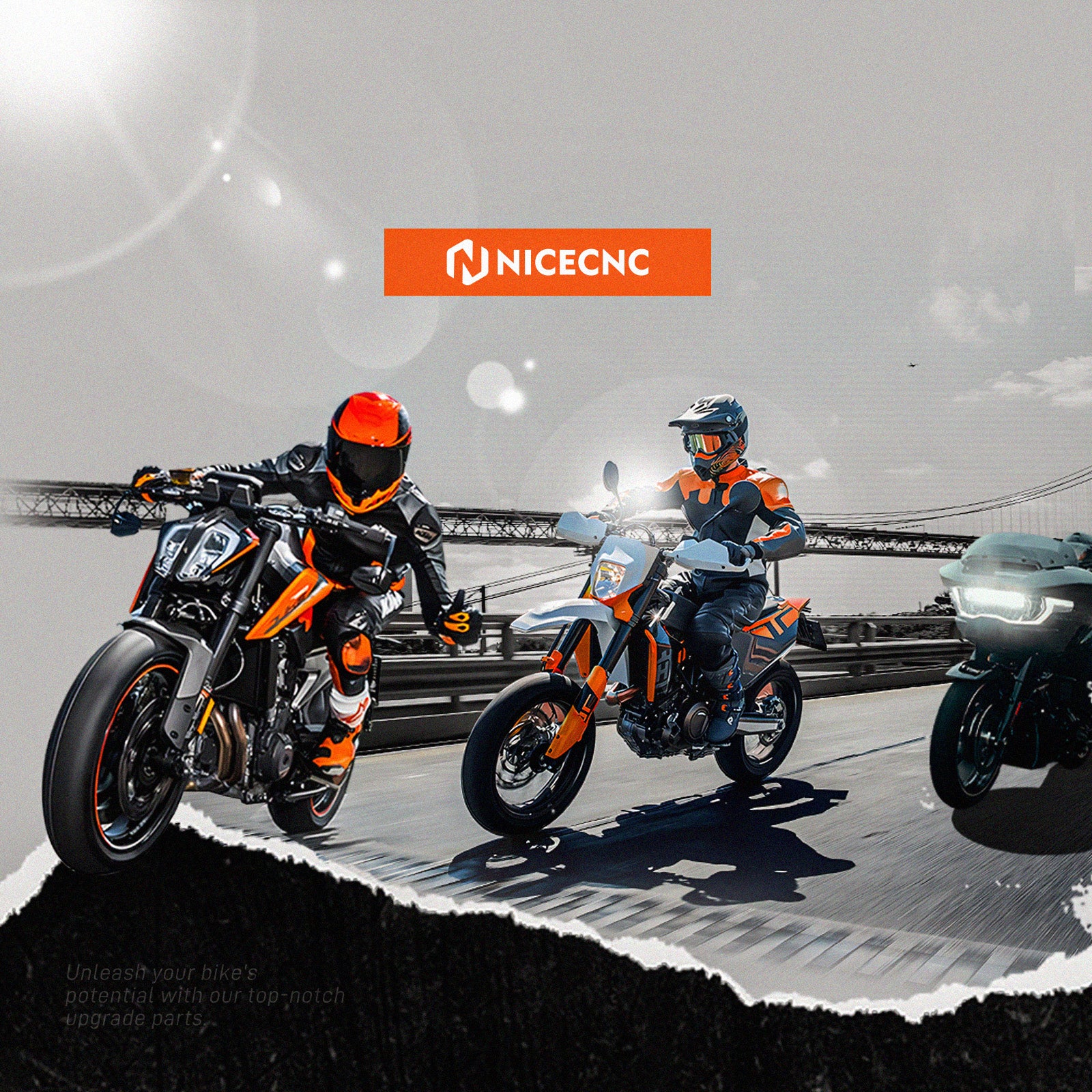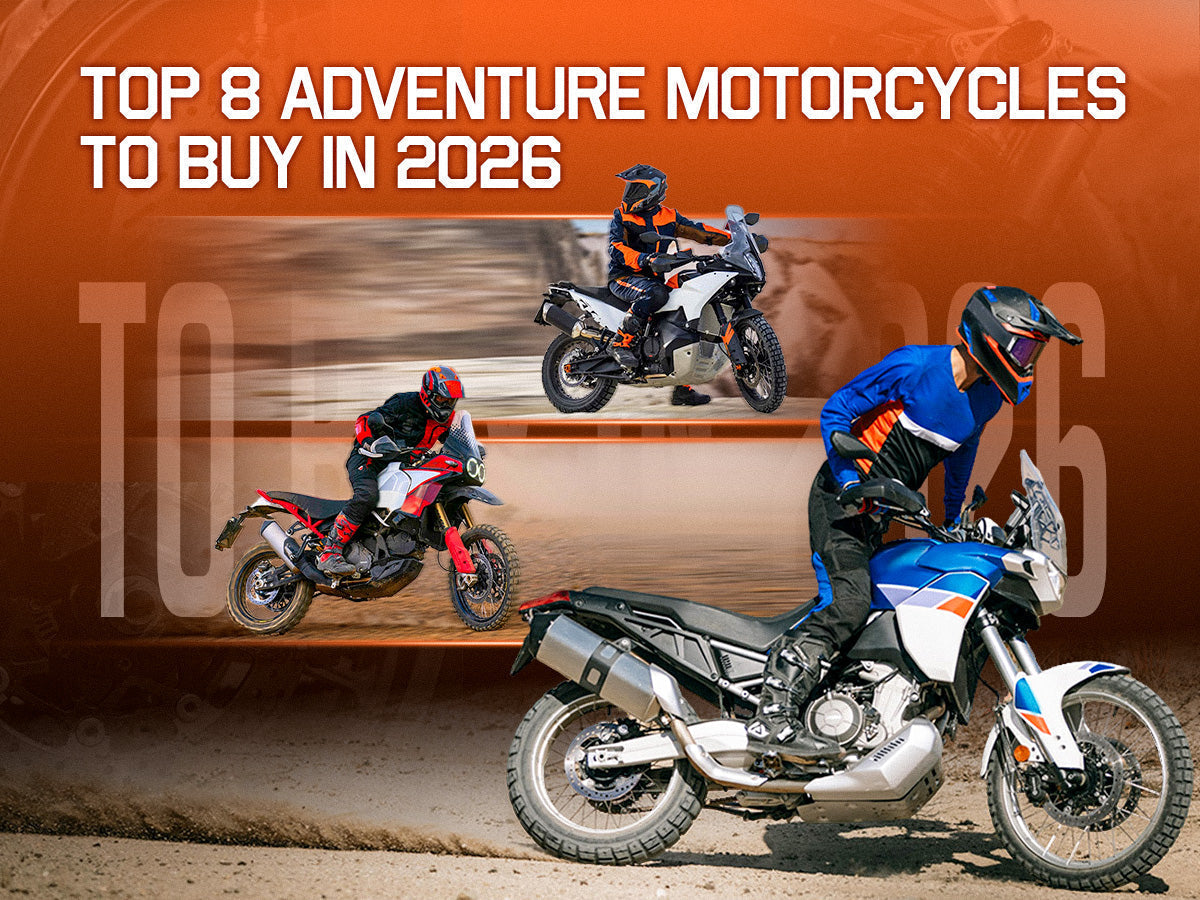If you own or are planning to upgrade a Honda Africa Twin CRF1100L and you ask: “What are the must-have mods, how to set it up for touring + off-road use?” — here is the answer in a nutshell:
Go-to modification setup for Africa Twin:
• Install robust crash bars + skid plate to protect engine & frame from off-road hits.
• Upgrade to a better luggage system (panniers/top-rack) + centre stand for long-distance touring.
• Improve ergonomics & comfort: better seat, riser bars, foot pegs + windscreen.
• Choose tires and suspension setup fit for an 80/20 road/off-road scenario.
In this guide, we’ll walk through the most effective modifications for your Africa Twin: protection, comfort, luggage setup, lighting, and control upgrades. You’ll learn what to upgrade first, why it matters, and how riders around the world are customizing their bikes for reliability and performance.
1. Crash bars & skid plate
Fit aftermarket crash bars + heavy-duty skid plate. These reduce damage if the bike falls or hits an obstacle.
Rocks, tree roots, and low-speed drops can all cause expensive damage. The factory bash plate and crash bars are minimal at best, designed for light gravel, not real adventure.
Start with a full crash bar system that shields both the engine and radiator. It’s one of the most cost-effective upgrades for peace of mind. Pair it with a heavy-duty skid plate — ideally made from 4mm aluminum with full coverage of the catalytic converter and lower frame rails. A well-designed plate can deflect impacts that would otherwise crack your oil sump or dent your exhaust headers.
Many riders also add front fork protectors and rear brake reservoir covers, small details that prevent trail debris from ending your ride early. For anyone who regularly rides off-road, radiator guards and case savers are cheap upgrades that prevent catastrophic leaks.

2. Luggage/panniers + centre stand + touring setup
If you’re planning multi-day rides or international trips, your luggage setup will define your comfort and convenience. The Africa Twin can carry a surprising amount of gear, but only if you distribute weight correctly.
For adventure or dual-sport use, the stock bike lacks optimized storage and a centre stand for maintenance in the field. Many riders ask: “How do I fit panniers on my Africa Twin?”, “Do I need a centre stand for touring?”
Fit quality luggage system (hard or soft cases), top-rack, side-carriers, plus a centre stand. That gives real touring readiness: you can load gear, maintain the bike more easily, and stand it upright for servicing.
A modular rear rack system is a must-have. Choose one compatible with soft or hard panniers so you can adapt it to your ride — soft bags for off-road trips, aluminum cases for highway tours.
Next comes the center stand — underrated but essential. It makes chain maintenance, tire checks, and loading gear a breeze, especially on long-distance rides.
Add tie-down loops and cargo extension plates if you’re carrying camping equipment or RotopaX fuel tanks. Combined, these upgrades transform the Africa Twin from a weekend explorer into a true long-haul machine.
👉 Explore rear racks for Africa Twin

3. Ride Longer, Feel Better: seat, risers, windscreen, foot-pegs
Adventure riding isn’t just about how far your bike can go — it’s about how long you can stay comfortable. The stock Africa Twin seat and windscreen are decent, but long days on the saddle reveal their limits fast.
For comfort, most riders start with a seat upgrade — either a gel insert or a full aftermarket seat. It makes an immediate difference on 300+ km days. Combine that with handlebar risers to improve standing posture off-road and reduce wrist strain.
Wind protection is another game-changer. A taller touring windscreen or adjustable deflector dramatically reduces buffeting on highways. For cold-weather or long-range rides, heated grips and handguards improve control and endurance.
Don’t forget foldable mirrors and adjustable clutch and brake levers — small touches that can make a big difference when you’re switching between technical trails and long highway runs.
👉 Shop upgrade parts for Africa Twin
4. Lighting, Electronics & Practical Add-Ons
Good lighting isn’t just about visibility — it’s about safety and confidence when the sun sets in the middle of nowhere. The stock LED headlights are fine, but serious adventurers usually add auxiliary spotlights or fog lamps mounted on crash bars. They widen your light spread and make night riding less stressful.
For electrical upgrades, a 12V power outlet or USB charger is essential for powering GPS, phones, or heated gear. Riders who travel internationally often install a voltage monitor or smart relay system to prevent battery drain when multiple accessories are running.
If you’re chasing remote trails, consider a navigation mount or handlebar GPS holder — something stable enough to survive hours of vibration. Combine it with a quick-access tool box or under-seat storage rack to keep repair tools within reach.
Q&A
Q1: What’s the first upgrade I should do if I’m on a budget?
A1: Start with crash bars and a skid plate. They protect your investment — everything else is optional until your first drop.
Q2: How much weight can the Africa Twin handle with full luggage?
A2: With a reinforced rack system, safely around 200–220 kg including rider and gear. Balance the load evenly and use a torque wrench when tightening mounts.
Q3: How much weight will additional luggage and protection add to Africa Twin, and does it affect handling?
A3: Some reviews say the weight gain can be ~ 50 lb when fully loaded with protection + luggage. One review: “All told I ended up adding about 50 pounds to my 2018 Africa Twin … but now it’s ready for almost any adventure.”
Handling will change: heavier steering at low speed, more inertia — so adjust ride style accordingly.
Q4: Which tires should I choose for an Africa Twin that’s mostly road but occasionally gravel?
A4: A dual-sport 80/20 tire (80% road / 20% offroad) is ideal. For example, the review above used Michelin Anakee Adventure tires and found them “exceptional for 80/20 ADV work”.
Choose tires that fit your tyre size (e.g., 21″ front / 18″ rear for many models) and maintain pressure appropriate for terrain.
Q5: Does installing aftermarket crash bars or skid plates void the warranty or affect servicing?
A5: It depends on region and dealer; some owners report dealers refused to service when non-OEM components were installed
We recommend checking with your local dealer and retaining stock parts if you need to revert for warranty coverage.
Upgrading your Honda Africa Twin isn’t about making it look “cooler.” It’s about preparing it for the adventures it was built for. With the right mix of protection, comfort, and practical accessories, you’re not just modifying a motorcycle — you’re building a reliable partner for every mile ahead.
Whether you’re planning a transcontinental ride or just exploring local trails, the right setup turns every trip into an unforgettable experience.
👉 Explore full Africa Twin parts collection on NiceCNC






